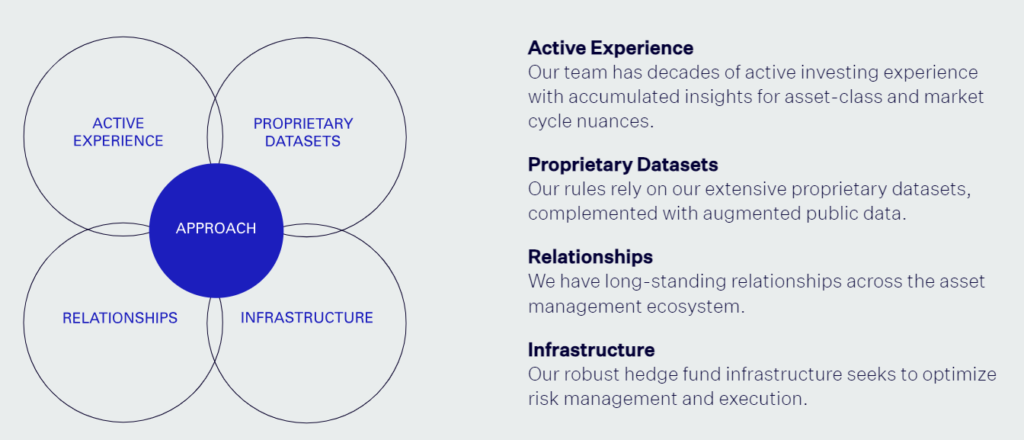
First of all, what is Magnetar Capital (MC)? It’s a hedge fund, no wait, it’s a private equity, no actually it’s a shadow bank, ehm, what the heck is MC? It’s a very interesting combination of the three categories I mentioned above and it has been working quite well for MC since 2005. What is the silver lining that links all of the above and allows MC to thrive? There is a word you find very often on their website and it’s “Relationships”.

In the ProPublica article, “The Magnetar Trade: How One Hedge Fund Helped Keep the Bubble Going”, from 2010, we get a better understanding of how, many years ago during the GFC, MC leveraged its relationship skills to strike an incredible profit for itself and its investors at great expense to the public.
“The hedge fund bought the riskiest portion of a kind of securities known as collateralized debt obligations — CDOs. If housing prices kept rising, this would provide a solid return for many years. But that’s not what hedge funds are after. They want outsized gains, the sooner the better, and Magnetar set itself up for a huge win: It placed bets that portions of its own deals would fail.”
Is Magnetar doing something similar today by any chance?
17 May 2024: CoreWeave Secures $7.5 Billion Debt Financing Facility led by Blackstone and Magnetar
3 August 2023: CoreWeave Secures $2.3 Billion Debt Financing Facility led by Magnetar Capital and Blackstone
How does #CoreWeave manage to secure billions in funding without generating a single penny of revenue in the first place? Here’s how: For this startup, Nvidia GPUs are currency
Ok, so now we see Magnetar, the “Shadow Bank” active in the lending tranches here similar to the 2008 CDO scheme. What about the “riskiest part of the deal” like they did for 2008 CDOs? As a matter of fact, Magnetar is CoreWeave’s cornerstone equity investor since 2021 (CoreWeave Raises $50M in New Funds From Magnetar Capital), until today to the point that a few months ago Magnetar won the “Deal of the Year” at 2024 M&A Atlas Awards
Now, going back to ProPublica article: “They [Wall Street Professionals] understood the Magnetar Trade as a bet against the subprime mortgage securities market. Why else, they ask, would a hedge fund sponsor tens of billions of dollars of new CDOs at a time of rising uncertainty about housing?”
If that was the case, then why banks helped MC? Well…
“At a time when fewer investors were stepping up to buy equity, the little-known hedge fund put out the word that it wanted lots and lots of it. Magnetar concentrated in a particularly risky corner of the CDO world: deals that were made up of the middle, or mezzanine, slice of subprime mortgage-backed bonds. Magnetar CDOs were big, averaging $1.5 billion, about three times the size of earlier deals built on subprime mortgages.
Magnetar’s purchases solved a crucial problem for the banks. Since the equity was so risky and thus difficult to sell, banks didn’t like to create new CDOs unless someone committed to buy them. Indeed, such buyers were so crucial that Wall Street referred to them as the CDOs’ sponsors.”
As a matter of fact, for Wall Street Bankers seeing their bubble grinding to a halt in 2005 “It seemed like a miracle, says one mortgage market investment banker, because no one had been buying equity”
Let me help you here, why Magnetar was investing in the equity and mezzanine tranches that were assured a 100% loss? “The equity bought by Magnetar represented just a tiny fraction of the overall CDO. If it costs, say, $50 million, an entire CDO could be 20 times that, $1 billion. And if the CDO begins to go south and you’re smart enough to have taken out enough insurance, you can make hundreds of millions of dollars. That, of course, would take a bit of the sting out of losing your original $50 million investment in the equity.”
Was all of this illegal? Not according to the SEC: “Hedge fund Magnetar Won’t Face Charges Tied to Mortgages”. This is despite a ton of evidence against the Hedge Fund (report here)
If, according to the SEC, the “Magnetar Trade” was not illegal then why not do it all over again?
I personally bet that MC figured out Nvidia’s scheme way before anyone else did (NO, NVIDIA IS ONLY ONE PIECE OF A BIGGER (FRAUDULENT) PUZZLE), and then they jumped right into it like they did for the Subprime business in 2006. However, this time banks seem to have learnt their lesson so who is MC fooling this time around? Private Equity firms like Blackstone and Asset Managers like Fidelity. Furthermore, they look wary of bringing #CoreWeave into IPO now delayed to 2025: Cloud Computing Startup CoreWeave Prepares for 2025 IPO
At this point, we all agree that there is one piece of the puzzle missing: the short bet against #Nvidia’s Ponzi collapse.
I’m afraid there is nothing in the publicly available options data that can point towards a big short bet being built on Nvidia, although this is not surprising at all since such information would instantaneously bring to light the whole scheme and kill this golden goose. Similar to 2008, I am sure someone very smart and eager to play at the borderline between legal and illegal, like MC, is at least covering its back against this massive long exposure to a single name and industry. How are they doing so? Surely through some very obscure derivative contracts, we will not know about their existence until after it all blows up.
